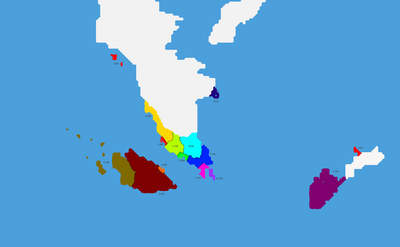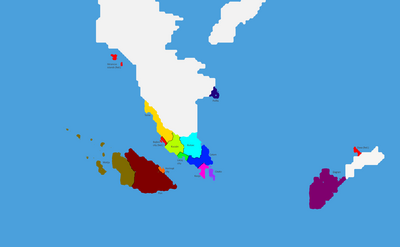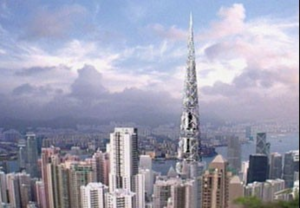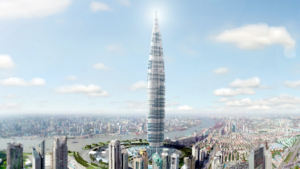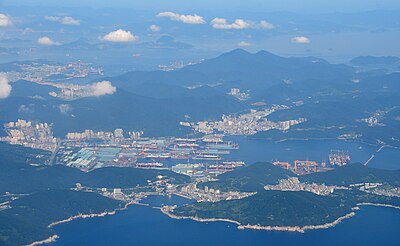Catam Pon
This article is incomplete because it is pending further input from participants, or it is a work-in-progress by one author. Please comment on this article's talk page to share your input, comments and questions. Note: To contribute to this article, you may need to seek help from the author(s) of this page. |
Republic of Catam Pon | |
|---|---|
|
Flag | |
| Motto: Majo Catam! Onward Catam! | |
| Anthem: Majo Catam! Onward Catam! | |
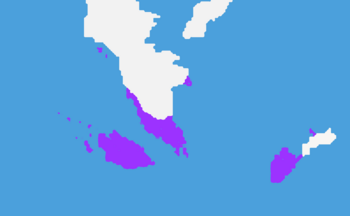 Map of Catam Pon | |
| Capital and largest city | Cixado |
| Official languages | Catamese |
| Religion | 34.7% No religion 26.7% Christianity 18.7% Animism/Folk religion 19.9% other |
| Demonym(s) | Catamese |
| Government | Unitary dominant-party parliamentary republic |
• Prime Minister | Láxo Ko |
• Speaker of the National Assembly | Yimá Hòn |
| Legislature | National Assembly |
| Establishment | |
• Colonized by Aquatilean Empire | 1815 |
• Aquatilean protectorate | 1915 |
• Full independence declared | 1922 |
• "Restoratory Coup" | 1949 |
| Area | |
• Total | 126,046.3 km2 (48,666.7 sq mi) |
| Population | |
• 2025 census | 38,212,000 |
• Density | 303.16/km2 (785.2/sq mi) |
| GDP (PPP) | estimate |
• Total | $2.256T |
• Per capita | $59,038 |
| GDP (nominal) | estimate |
• Total | $1.827T |
• Per capita | $47,821 |
| HDI (2025) | 0.908 very high |
| Time zone | UTC-08:00 (CST) |
| Date format | yyyy/mm/dd |
| Driving side | right |
| Calling code | +49 |
| Internet TLD | .ca |
Catam Pon, officially the Republic of Catam Pon (ipa: /ɕätʰäm poɴ/), is a small nation on the southern end of the Tagrae continent, bordering both the Marlos and Sareen Oceans. The nation controls a series of islands and coastal enclaves in its vicinity, giving it control over the strategic straits nearby. It is known for having one of the highest population densities in all of Telrova, as well as being relatively technologically advanced. The country has utilized both its relative neutrality and strategic position to allow for vast, semi-centralized economic prosperity and development, being a bustling trade hub, and a tax haven for others. Many ethnic groups, religions, and languages make up the region, mostly due to its past colonization, geography, and trade. Because of this, multi-racialism has been enshrined in the nation's legal code, with most government documents and decrees having to be issued in most of the country's major languages, though Catamese serves as a lingua franca.
It's long history as a maritime emporium, naval base, and thalassocracy continue to influence to the modern era. With this, the country has always retained close ties to its former colonial owners, the Aquatilean Empire. This partnership, among others, has helped the nation to develop and prosper, and to become both an economic and technological hub in Telrova. It is also notorious for its "dominant party" state structure, where it is nominally a democracy, but the largest party, the People's Party took over in the late 1940s due to rampant corruption, cries for succession, and communist insurrections taking place. They have since "mellowed," but have democratically ruled the country every year since they took over in 1949 with the help of the Armed Forces of Catam Pon. Their policies, though sometimes being stronghanded and authoritarian, are often credited with keeping the country together and allowing for it to develop as it has.
Since 1971, the country has undergone significant amounts of democratization, often being referred to as a "flawed democracy," though the People's Party prefer to call their policies "orderly." This obsession with order is one of the defining characteristics of Catamese society, often being accredited to their rapid financial success in the latter half of the 20th century to the modern decade, though the growth has substantially slowed in recent years. The country is, in most areas, also relatively safe, with many cosnidering it a "police state," though most international observers stick by an "authoritarian democracy" label.
Etymology
History
Geography and Climate
Government and Politics
Parliament
The Catamese parliament is a unicameral legislature composed of 245 democratically elected seats. It has historically been dominated by the People's Party, who took over in a coup in 1949, establishing 22 years of martial law before easing back into a democratic system.
Voting is carried out in a representaive manner, with seats allocated based on the population of the various regions (federal territories included). However, significant voter fraud and manipulation has allegedly occurred in the past, with the ruling People's Party controlling most of the major media and having deep ties with many of the large corporations, including those responsible for providing the logistics and machinery necessary to carry out democratic elections.
The People's Party has begun to wane in its influence and popularity in recent years, but manages to hang on to the older, more conservative demographics, as well as the upper class and business owners, who contribute heavily to their campaigns.
Historically, many parties also remained banned for some time, with the 1949 coup seeing the communists and other "leftist" parties banned for 22 years until a series of left-winged and pro-democratic protests forced the government to unban only those parties deemed "pro-democratic," "pro-markets," and "committed to institutional reform." But the communist party was finally unbanned from taking part in national politics in 1996, though it is believed they are still closely, but legally, monitored by the government, as are many other major opposition parties.
Parties
| Party Name | Ideology | Position | Seats in Parliament | Members |
|---|---|---|---|---|
| People's Party | National Conservativism National Democracy |
Right-wing | 130 / 245 |
~160,000 |
| Social Democratic Party | Social Democracy Democratic Socialism |
Center-Left to left-wing |
76 / 245 |
~96,000 |
| Liberal Party | Classical Liberalism National Liberalism |
Center to center-right |
19 / 245 |
~18,000 |
| Communist Party | Socialism Communism |
Far-left | 15 / 245 |
~17,000 |
| Green Party | Environmentalism Democratic Socialism |
Left-wing | 4 / 245 |
~4,000 |
| Tele League | Tele Regionalism Monarchism |
Right-wing | 1 / 245 |
~2,000 |
Administrative divisions
Catam Pon is composed of 12 regions and 3 federal territories. 3 of the regions have their own Monarchies, though they are legally powerless and barred from holding any positions in government. The 3 federal territories are utilized for a variety of purposes, with the islands of Ilérancso being used as an offshore international financial center. Meanwhile the federal city of Bajkon is used as a planned city to house the judicial branch of government, and possibly the executive (meanwhile parliament will stay in Cixato). Lastly, there is Daxa peninsula, under control of the federal government, which is used both as a free trade zone and major military base.
Watija, the westernmost geographical region of Catam Pon, is the poorest regions in the country, despite producing most of the country's oil, anthracite coal, and bauxite (aluminum ore). The ongoing Watijan insurgency has gone on since the 1940s fueled by the wealth disparities between the people of this region and those of the rest of the country, though in recent decades the conflict has died down to having less than 10 deaths per year. Watija is also the only region that is majority Christian, and was the last to be colonized by the Aquatileans. The Watijan monarchy has held some form of power there since the late 1500s, where it ruled as a miniature thalassocracy over the nearby archipelago, bringing it substantial wealth in that era. After colonization, and post-colonization, much of the wealth had stolen and the newfound Republic of Catam Pon decided to sell of most of the mineral and oil-rich lands of the region to many of Catam Pon's notable modern day megacorporations, giving them their start. The Watiyan people also make up the second largest ethnic group in the country, and the largest indigenous language other than the Catamese. The region also has the lowest rates of bilingualism as many people either lack the access to proper education or refuse to teach their children the Catamese language. Ethnic Watiyans face significant discrimination in other regions of the country, where they are often viewed as wild and/or uneducated and poor.
The Pon region was crucial in forming the early state of Catam Pon, hence the name. This came primarily as a means for the Pon to prevent themselves from being exploited like the Watijans next door, and to strike back at the Watiyans. As a result, Pon is well-developed like most of the mainland, having adequate infrastructure and industry, as well as being the largest agriculturally productive regions in the country. However, the island's population has been diluted, and the Ponian language is waning as many Catamese and foreigners have or were moved to the region historically, and many ethnic Ponians have settled in the homeland to pursue better economic oppurtunities. The city of Horinqé was set aside as its own region in 1980 to settle this, providing the Ponians with more direct political representation in parliament. Both regions are also minor oil producers, though they see shares greater than that of Watija. Lastly, Horinqé hosts the headquarters to the Pon corporation, one of the big six Catamese corporations.
Teme is the northernmost region on the mainland of Catam Pon, whose capital city, Temen, is a large port similar in size to Bajkon, which was formerly an undeveloped part of Teme (and was made a federal territory in 1988). Teme is one of the few regions, like Watija to have its own monarchy, who have ruled the region continuously since the early 1700s. This region makes money primarily from trade, industry, and agriculture, as well as limited mining prospects.
South of Teme are the regions of Kuczán and Kutzac, who split in 1980 during constitutional reforms, having formerly been called Kucsa. This split came amongst the people of Kutzac, who by this point were mostly Catamese, not wanting to have taxes set aside for, or association with, the Kusca royal family. This led to the two regions splitting, and the former maintaining its monarchy. Both regions have minor agricultural production, but focus primarily on industry and energy production, with Kutzac also having a port and natural bay through which it can actively partake in maritime trade.
Lácaj city was historically a part of the region of Catam, but was split upon the country gaining independence, mostly to balance out the economic and political power of the Catam region. Nowadays, Lácaj operates as one of the primary ports for the entire country, hosting a variety of drydocks, refueling stations, wharfs, etc. Today the city is notable for hosting the headquarters of STX corporation, which hosts one of the tallest skyscrapers in the country and brings a lot of revenue to the city, consistently placing it amongst the most well-developed and safest in the world.
The region of Catam historically included, at the time of Aquatilean colonization, the regions of Lácaj, Cixato, and Keojo, although the island of Cixato was sold to the Aquatileans in 1815, and the region of Keojo was granted to them 9 years later. The old region of Catam was historically the most powerful and populous in the region, though the post-colonial divisions left Catam proper quite weak (having divided it up into Catam and the 3 other aforementioned regions). This region is the fourth and final one to host a monarch of its own, and due to its proximity with other economically sufficient regions, it maintains its own economic power within the country, as well as playing an important role in the country's history. To the south of Catam is the region of Keoje, formerly a part of Catam, which is a major industry hub, producing many commercial ships for international maritime trade, and hosting the 4 (soon to be 5) bridges linking the island city of Cixato to the mainland. Keoje is also the third most populous region in the country, mostly due to its proximity to Cixato and its large industrial and manufacturing base. It also hosts the headquarters to Syjenþ and Tsywy groups, two major mega corporations.
The city of Cixato is the current capital city and economic center of Catam Pon, with a population in excess of 10 million people packed into an area of 1,323.74 sqkm, resulting in a population density of over 7,700 per square kilometer. This city hosts most of the major corporations, including the headquarters for KráVo (KV) corporation and the Tajqe Moncy (TM) Group, as well as one of the headquarters for Catabank, the largest in the country. The city hosts its own airport and military air/naval base, with a wide array of tourist attractions, manufacturing plants, drydocks, wharfs, financial buildings, etc. It continues to serve as an important entrepôt in global trade, with hundreds of ships stopping or passing by each day.
To the north is the small region of Polða, which has limited oil reserves and a small population relative to other non-federal regions. Other than being used as a major military hub and having a relatively sizable industrial base, there is not much to note other than the Dodomny Lake situated square in the middle of the region, home to many tourist resorts.
Dagran, the easternmost non-federal territory, is rather sizable, but also has one of the smallest population densities in the country as a whole. Other than limited mining prospects, it is home to only one notable seaport, but also provides plenty of area for the military to train, mostly as a result of successful counter-insurgency missions in the region in the Karax (or Dagran) insurgencies that persisted into the early 2000s as the region faces a situation similar to that of Watija, though not nearly as repressive.
Rights
Catam Pon is broadly considered a "flawed democracy" with its dominant-party, unitary system. The People's party has avoided losing a single election since 1950 and are accused of using a variety of underhanded tactics, historically and into the modern day, to maintain their control over the country. These "underhanded tactics" include the past banning of parties, including the current ban on parties who "seek to undermine the sovereignty of the nation" and "those parties whose platforms explicitly or tacitly advocates treason and secession." Because of this, many regional parties have been banned, or forced to take watered-down tones including advocating for regional autonomy as opposed to outright succession.
The People's Party also takes part in widespread election interference, including spying on competitors, often under the guise of the opposition being, or potentially being "foreign agents," related to a law stating that one cannot run for office if they have received funds from foreign entities, whether they be individuals, corporations, or governments. As well, the aforementioned laws on advocating for succession or "undermining sovereignty" are utilized for the secret, but technically legal surveillance of opposition parties. The PP also has connections to many of the major Vapols, some of whom are responsible for the equipment and logistics of elections, as well as media coverage and polling (which is nominally without government influence) that heavily influences voters in the days prior. However, these accusations of corrupt election practices have decreased in recent years as the PP has "opened up" to a purer form of democracy as a means of being on good grounds with many trade partners.
Protests and petitions are heavily restricted, with protest permits being nearly impossible to attain unless it is conveniently for something pro-government, or something deemed unproblematic. In many cases, spontaneously occurring protests and riots do happen every now and then, and are often put down violently by police, under the guise of restoring "law and order" as stipulated in the constitution. Many petition websites are also blocked in the country due to their "potentially subversive nature" and any petitions posted on government websites have to vetted and approved, often at the whim of whoever is in charge of reviewing it at that time.
In terms of civil rights, the multilingual and multiethnic nature of the country is endowed into the constitution, where it ensures equally oppurtunity and rights for all citizens, regardless of sex, religion, ethnicity, language, etc. The ban on many ethnic/regionalist parties is also justified using this constitutional clause, as "any attempt to omit another countryman" is considered immoral and "unfair." However, in practice, Catamese society is highly patriarchical, though recent bounds have been made in regard to female representation in companies and government (including having women make up approximately 20% of parliament). The issue is different languages has also been supplanted by making Catamese the lingua franca of Catam Pon, though this is an informal title and all legislation and government docusments have to be offered in at least 3-4 of the primary national languages. Some policies have also led to minority languages declining as Catamese becomes more popular, causing some controversy, though this is typically disregarded. Some ethnic groups, namely the Watijans and Karaxi (Dagranians) due experience some forms of discrimination, as do those often "imported" from other countries to make up for labor shortages, namely Patolians.
Issues like gay rights are also highly contentious, as the ruling conservative People's Party refuses to legalize it, though it has been decriminalized in recent years, with a nationwide order for decriminalization occurring in 2019. However, some regions like Watija continue to prosecute homosexuals, often with the federal government turning a blind eye. Transgenderism has also not been decriminalized nationally, but is in many localities and entire regions out of the lack of desire to pursue such cases, especially as there is little legal precedent. Many new age religious movements have also been cracked down upon, as well as religious sects deemed to have violated some of the laws mentioned previously.
Infrastructure
Economy
Overview
The economy of Catam Pon is a highly developed mixed economy, one in which the government (via nationalized government services) plays a substantial role alongside private businesses in the economy. The country in renowned for being considered a tax haven, and a large global financial hub, as well as a notable dependence on entrepôt trade. The economy is commonly described as being free, innovative, dynamic, and business-friendly. Despite the free market system in place, the government does have a strong stake in the economy, contributing nearly 18% of nation's GDP.
The heart of the Catamese economy lies in its highly trained, educated and advanced workforce, which is crucial to its service and manufacturing sectors. It also has an abundance of conglomerate corporations, known locally as "Vapol," that are involved in several different economic sectors and hold quite a sway over the country's politics. Some of these conglomerates are as follows:
- STX Corporation: Finance/trade, commercial shipbuilding, heavy equipment, and energy production.
- KrháVo Corporation: Construction, airplane manufacturing, shipbuilding, fashion, energy production, and electronics.
- Tajqe Moncy Group: Shipbuilding, automotive, aircraft manufacturing, heavy industries, electronics, and telecommunications.
- Syjenþ Group: Electronics, telecommunications, construction, finance/trade, automotive, retail, advertising, and commercial shipbuilding.
- Pon Corporation: Mining, construction, oil refining, finance/trade, chemicals, pharmaceuticals, and real estate.
- Tsywy Group: Oil refining, real estate, electronics, commercial manufacturing, retail, and entertainment.
- Cata Bank: Finance/trade, real estate, and retail.
The primary trading partners of Catam Pon are Nibelia, Patolia, Fleet of Oceans, Acadia, and Ruotsaland, and the country's armed netrality and strategic location along global trade routes makes it an ideal location for many nations to have conferences and meetings. Most of the international activity is focused around the largest city, and capital of Catam Pon, Cixato (IPA: /ɕiχäto/).
Shipbuilding
Starting with the end of martial law in the early 1970s, the government of Catam Pon in cooperation with many of the Vapols began to develop a series of key industrial sectors, one of the largest being shipbuilding. The reason for this was that much of the coastline was already perfect for the creation of drydocks and wharfs. As well, the Aquatilean colonization brought a lot of early industry and the construction of seaports, as the Aquatilean sought to build up the region into a large overseas naval base, though this did not entirely play out due to the collapse of the Aquatilean empire. By the late 1980s, multiple drydocks had been built with some having up to a 1.2 Million ton capacity. The majority of ships produced are commercial vessels and tankers, but the industry also produces a variety of luxury and military-related vessels, in addition to those meant for scientific research. Some of the notable companies in this sector include KV Heavy Industries, TM Heavy Industries, Syjenþ Ocean & Shipping, and STX Offshore & Shipbuilding.
Today, the country as a whole is responsible for a sizable portion of the world's shipbuilding, which mostly takes places in and around the cities and the region of Keoje in the south. As a result, high-end ship manufacturing provides one of the fundamental bases for the Catamese economy, contributing greatly to the GDP and serving as the foundation for many of the Vapols. Using profits from these industries, the country also maintains a moderately-sized but powerful fleet of ships in its navy as a means of deterrence.
This industry in particular has been linked to a variety of past sabotage and espionage cases, as well as past terrorist attacks during many waves of insurgent groups throughout the nation, which itself led to the creation of a robust private security/military industry in the nation.
Electronics
Automobiles
Banking
Real Estate
Energy
Mining
Airplanes
Construction
Armaments
Demographics
There are 8 primary ethnic groups in Catam Pon, that are as follow:
- Catamese: 17,213,500 (45.05% of the population)
- Watiyan: 5,064,500 (13.25% of the population)
- Ponian: 3,822,000 (10% of the population)
- Teme: 3,303,400 (8.64% of the population)
- Vanalada: 3,050,800 (7.98% of the population)
- Karaxi (Dagranian): 1,738,500 (4.55% of the population)
- Patolian: 1,303,100 (3.41% of the population)
- Elven: 737,300 (1.93% of the population)
- Mixed/other: 5.19% of the population (1,980,900)
Culture and Society
See Also


